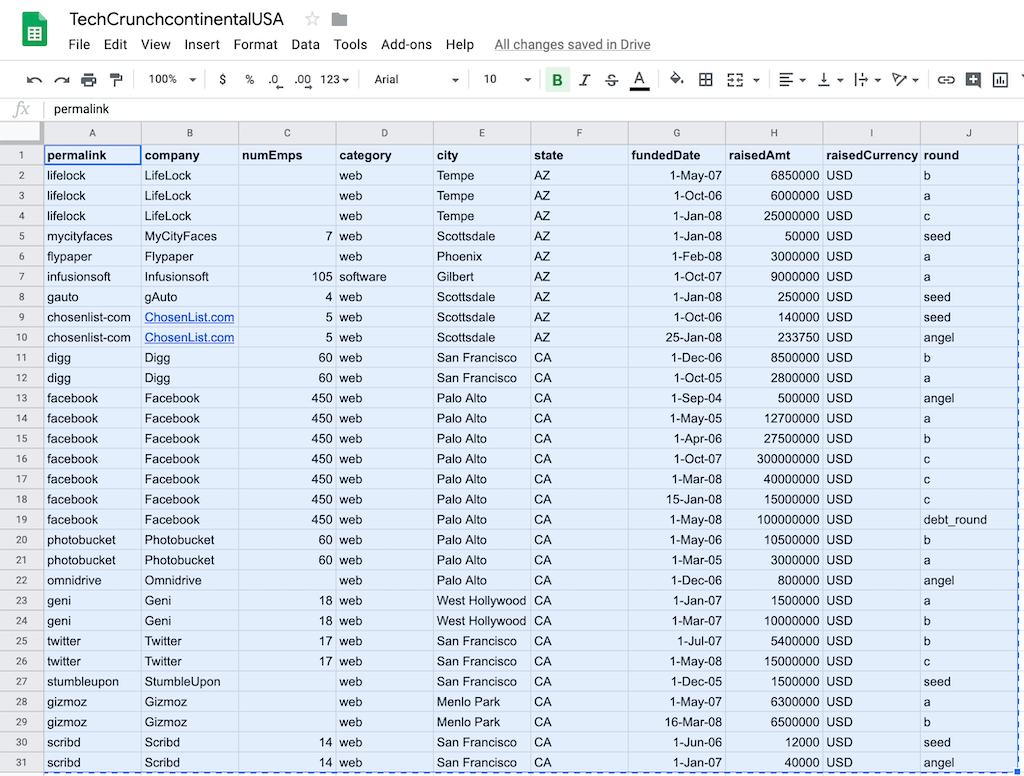The Python Markdown package is now maintained by Waylan Limberg. The new project website is here: Python Markdown at PyPy. Python Programming tutorials from beginner to advanced on a massive variety of topics. All video and text tutorials are free. In this tutorial, you will learn to install and run Python on your computer. Once we do that, we will also write our first Python program.
In this little tutorial, I want to show you in 5 simple steps how easyit is to add code syntax highlighting to your blog articles.
There are more sophisticated approaches using static site generators,e.g., nikola, but the focus hereis to give you the brief introduction of how it generally works.
All the files I will be using as examples in this tutorial can bedownload from the GitHub repository/rasbt/python_reference/tutorials/markdown_syntax_highlighting
Update:
The people atWebucator (aprovider of Python training classes) created a nice video tutorial fromthis blog post that nicely explains all the essential steps in less than4 minutes! Check it out on YouTube:

1 - Installing packages
The two packages that we will use are
Just as the name suggests, Python-Markdown is the Python package that wewill use for the Markdown to HTML conversion. The second library,Pygments, will be used to add the syntax highlighting to the codeblocks.
Conveniently, both libraries can be installed via pip:
and
(For alternative ways to install the Python-Markdown package, please seethe documentation)
2 - Writing a Markdown document
Now, let us compose a simple Markdown document including some Pythoncode blocks in any/our favorite Markdown editor.
Note that the syntax highlighting does not only work for Python, butother programming languages.
So in the case of C++, for example:
Since the CodeHilite extension in Python-Markdown uses Pygments, everyprogramming language that is listedhere currently has support for syntaxhighlighting.
3 - Converting the Markdown document to HTML
After we created our Markdown document, we are going to usePython-Markdown directly from the command line to convert it into anHTML document.
Note that we can also import Python-Markdown as a module in our Pythonscripts, and it comes with a rich repertory of different functions,which are listed in the libraryreference.
The basic command line usage to convert a Markdown document into HTMLwould be:
However, since we want to have syntax highlighting for our Python code,we will use Python-Markdown’s CodeHiliteextensionby providing an additional -x codehilite argument on the command line:
This will create the HTML body with our Markdown code converted to HTMLwith the Python code blocks annotated for the syntax highlighting.
4 - Generating the CSS
If we open thebody.htmlfile now, which we have created in the previous section, we will noticethat it doesn’t have the Python code colored yet.
What is missing is the CSS code for adding the colors to our annotatedPython code block. But we can simply create such a CSS file viaPygments from the command line.
Note that we usually only need to create thecodehilite.cssfile once and insert a link in all our HTML files that we created viaPython-Markdown to get the syntax coloring
5 - Insert into your HTML body
In order to include a link to thecodehilite.cssfile for syntax coloring in our converted HTML file, we have to add thefollowing line to the header section.
<link type='text/css' href='./codehilite.css'>

Now, we can insert the HTML body(body.html),which was created from our Markdown document, directly into our finalHTML file (e.g., our blog article template).
If we open ourfinal.htmlfile in our web browser now, we can the pretty Python syntaxhighlighting.
Useful links:
languages supported by Pygments
Released:
A fast and complete Python implementation of Markdown
Project description
markdown2: A fast and complete Python implementation of Markdown.
Markdown is a text-to-HTML filter; it translates an easy-to-read /easy-to-write structured text format into HTML. Markdown’s textformat is most similar to that of plain text email, and supportsfeatures such as headers, emphasis, code blocks, blockquotes, andlinks. – http://daringfireball.net/projects/markdown/
This is a fast and complete Python implementation of the Markdownspec. See http://github.com/trentm/python-markdown2 for more info.
Release historyRelease notifications | RSS feed
2.4.0
2.3.10
2.3.9
2.3.8
2.3.7
2.3.6
2.3.5
2.3.4
2.3.3
2.3.2
2.3.1
2.3.0
2.2.3
2.2.2
2.2.1
2.2.0
2.1.0
2.0.1
2.0.0
1.4.2
1.4.1
1.4.0
1.3.1
1.3.0
1.2.0
1.1.1
1.1.0
1.0.1.19
1.0.1.18
1.0.1.17
1.0.1.16
1.0.1.15
1.0.1.14
1.0.1.13
1.0.1.12
1.0.1.11
1.0.1.10
1.0.1.9
1.0.1.8
1.0.1.7
1.0.1.6
Download files

Download the file for your platform. If you're not sure which to choose, learn more about installing packages.
Markdown Python Code
| Filename, size | File type | Python version | Upload date | Hashes |
|---|---|---|---|---|
| Filename, size markdown2-2.4.0-py2.py3-none-any.whl (34.6 kB) | File type Wheel | Python version py2.py3 | Upload date | Hashes |
| Filename, size markdown2-2.4.0.tar.gz (96.6 kB) | File type Source | Python version None | Upload date | Hashes |
Hashes for markdown2-2.4.0-py2.py3-none-any.whl
| Algorithm | Hash digest |
|---|---|
| SHA256 | 8d4ef4a2d090c99532069c4611a9a2b9bea6ae1fa29b6c3727c95d1e31a8f6c5 |
| MD5 | aa5354f2b1eb145400074d0215fc962c |
| BLAKE2-256 | 5dbe3924cc1c0e12030b5225de2b4521f1dc729730773861475de26be64a0d2b |
Python Markdown Documentation

Python Markdown Example
Hashes for markdown2-2.4.0.tar.gz
| Algorithm | Hash digest |
|---|---|
| SHA256 | 28d769f0e544e6f68f684f01e9b186747b079a6927d9ca77ebc8c640a2829b1b |
| MD5 | 7d86fe855f1080313bcda3460c231771 |
| BLAKE2-256 | bc037e156a4da266e5db4fbaa8b4efc3187f14f6944d9f89f56c62b1537133b9 |
